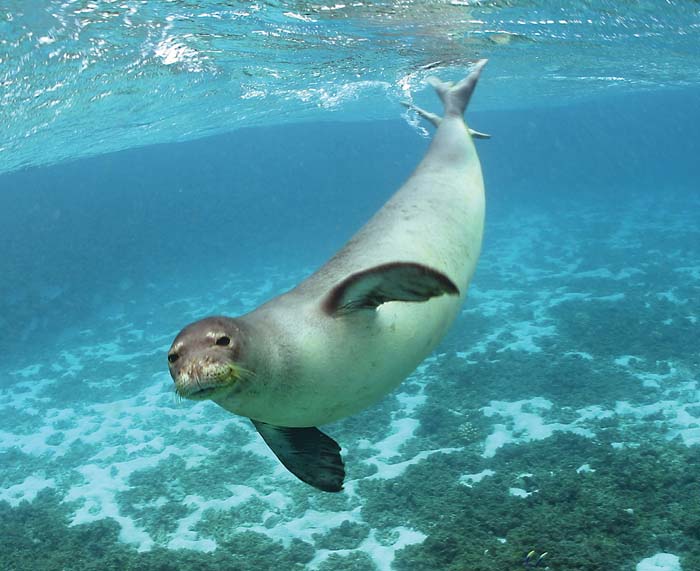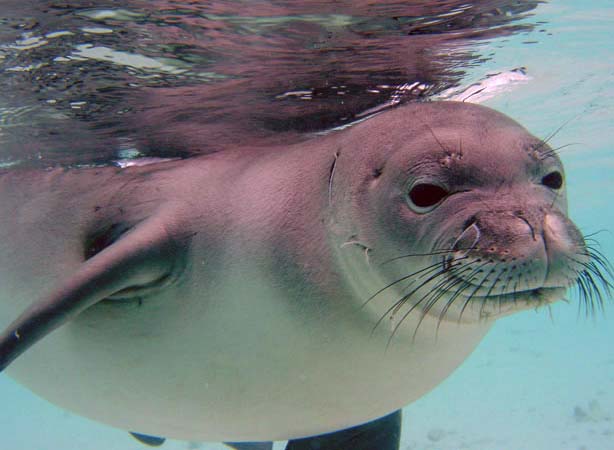Hawaiian Monk Seal – 2nd Most Endangered Seal
Posted in Wildlife A-Z | January 4, 2011 | Comment NowThe Hawaiian monk seal is one of the most endangered seal species in the waters of the United States of America. Only about 1,200 of them are said to be left. The most endangered seal species is another monk seal, the Mediterranean monk seal, which is said to have only about 600 of them left in the Mediterranean seas. There used to be a third species of the monk seal, called the Caribbean monk seal, which is now extinct.
About Hawaiian Monk Seals:
The scientific name for the Hawaiian monk seal is Monachus Schauinslandi. These animals are known to inhabit the northwestern part of the Hawaiian Islands, and they spend a lot of time at sea. Believe it or not, these creatures can dive as deep as 600 feet, and can stay under water for a good 20 minutes.
Diet:
Their diet would include fish, octopus, lobsters and eels.
Description:
The females are slightly larger in size than the males. The females will reach about 2.5 meters in length, and could weigh about 450 lbs. The males would reach about 2.1 meters in length and might weigh about 375 lbs.
The adult monk seals will possess a coat that is silvery-grey on their backs and a slightly lighter creamy color on their underside. The back of the males (especially males) will tend to become darker with age; and their overall life expectancy is said to be around 25 to 30 years.
Maturing and Mating:
The females are known to mature at the age of 5 to 6. The male age of maturing is yet to be pinpointed. The monk seals are promiscuous animals and are known to mate underwater. In some colonies, where there is a skewed gender ratio in favor of the males, there have been cases of group mobbing of estrus females, and this could even cause death of the female in some cases.
Gestation, Birth and Nursing:
The gestation period for the female Hawaiian monk seal is about 10 to 11 months. Most of the births in Hawaiian monk seals have been recorded in the months of March and early April. However, there have been reports of births all the year round as well. The mother can only give birth to one pup at a time; and at birth, the pup will be about 1 meter long and will weigh about 35 lbs. The mother will generally nurse the pup for about 39 days; during which time she will be on land. Once this nursing period is over and done with, she will abandon the pup and return back to sea.





 Save to delicious
Save to delicious Stumble it
Stumble it